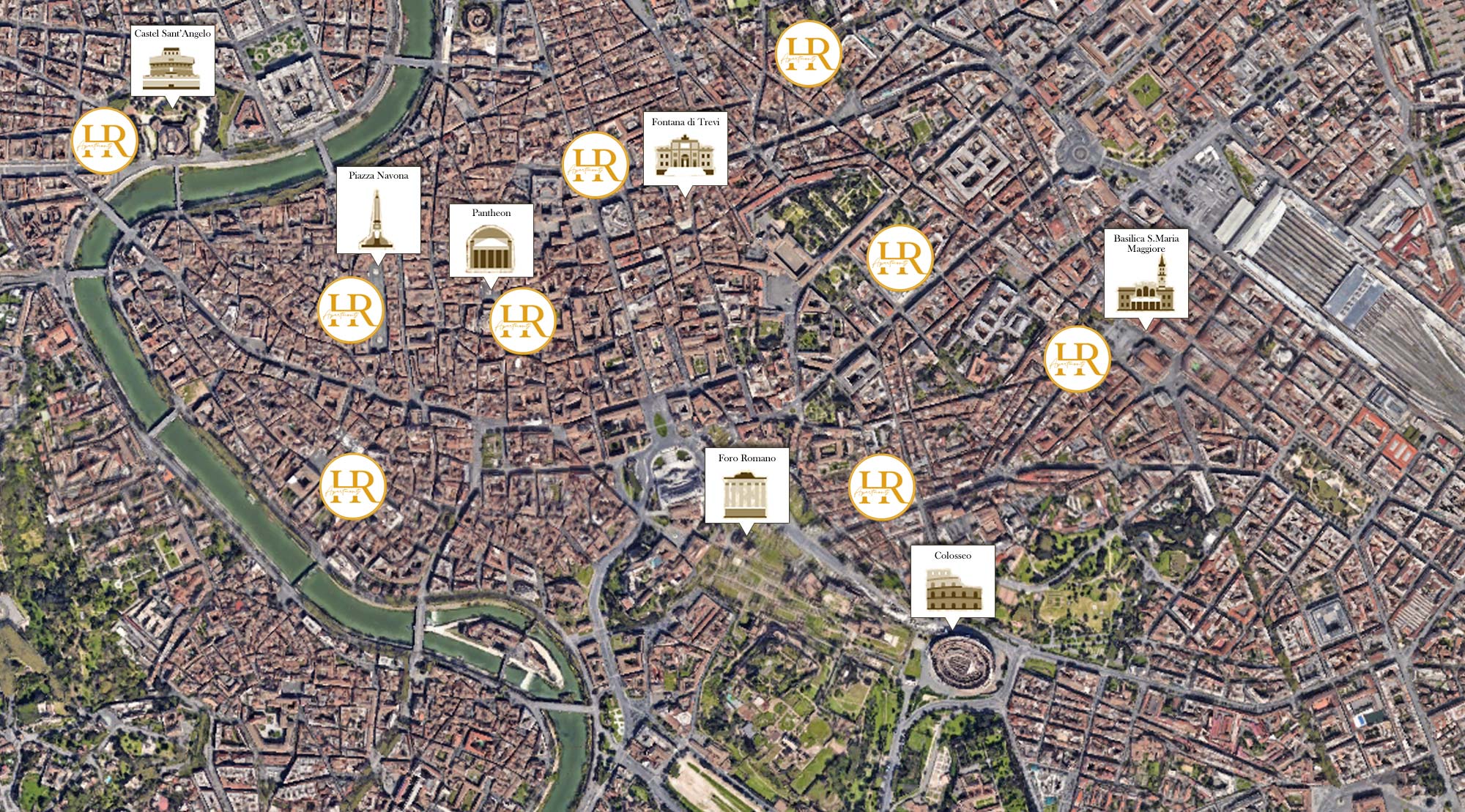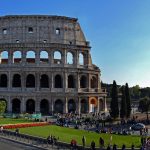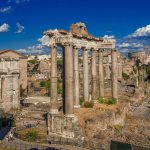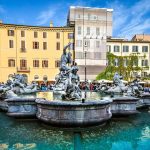
How to get there

Private transfer
Taxi: about €15-20 + luggage (current rate)
Bus: get off after 5 stops at Chiesa Nuova

Private transfer
Shuttle bus to via Crescenzio/piazza Cavour (Castel Sant'Angelo)
Taxi = €48 (fixed rate) + luggage (current rate)
Direct Leonardo Express train to Termini Station

Private Transfer
Shuttle bus to Termini (Via Marsala)
From Termini, Taxi = €30 + luggage (current rate)
Coach to Termini
...In the surroundings...

Known in ancient times by the Latin name Amphitheatrum Flavium (Flavian Amphitheatre) or simply Amphitheatre, it is the largest amphitheatre in the world. The name "Colosseum" became widespread in the Middle Ages and derives from the popular deformation of the Latin adjective "colosseum" ("colossal") due to its grandeur, compared to the small buildings of the time. The Colosseum is located in the heart of the city of Rome. It is the most important Roman amphitheatre, and also the most imposing monument of ancient Rome that we are fortunate to inherit. The Amphitheatre is today known throughout the world as a symbol of the city of Rome and one of the most iconic symbols of Italy. It was erected at the behest of the emperors of the Flavian dynasty in the 1st century AD. Its construction was begun by Vespasian in 72 AD and inaugurated by Titus in 80, with further modifications made during the empire of Domitian; all three Roman emperors in different historical periods. The Colosseum hosted, until the end of the ancient age, shows of great popular appeal, such as gladiator fights, hunting shows, re-enactments of famous battles, and dramas based on classical mythology. The Colosseum was included in the list of World Heritage Sites by UNESCO in 1980. In 2007, this important monument was also included among the New Seven Wonders of the World, by a competition organized by the New Open World Corporation. The archaeological circuit of the Colosseum, Roman Forum and Palatine attract more than 6 million visitors every year. This is the second most visited Italian state museum site, after the Pantheon.

The Roman Forum (Forum Romanum in Latin), or simply “the Forum”, is an archaeological area of the city of Rome that attracts millions of visitors each year. The Forum is enclosed by the Colosseum, Via dei Fori Imperiali, the Capitoline Hill, and the Palatine Hill. In the history of ancient Rome, the Forum represented the political, legal, economic and religious center of the city; establishing itself for centuries as the epicenter of the entire Roman civilization. The valley of the Forum was for centuries the site of important events that, due to their importance, influenced the cultural, political, philosophical and legal foundations of Western thought. After periods of decline in ancient history (the Forum was even used as a pasture for cattle at certain times), today the area of the Forum has been brought back to light. It is now a museum site, and with the Colosseum and the Palatine Hill is one of the most illustrious and visited archaeological sites in the world. The site attracts more than 6 million visitors each year.

Piazza Navona is one of the most beautiful and famous squares in Rome. It was built by the Pamphili family; a noble family of Rome intertwined with political and papal life in the 16th and 17th centuries. Pope Innocent X (Giovanni Battista Pamphilj; member of the prestigious family) had the square built in a monumental style. Piazza Navona is one of the most important symbols of Baroque Rome. The square hosts some artistic and architectural elements of great value. In the center of the square is the Fountain of the Four Rivers by Gian Lorenzo Bernini. It represents the four corners of the earth: the Rio de la Plata, the Nile, the Ganges, the Danube. In front of Bernini's fountain is the church of Sant'Agnese in Agone, a work by Francesco Borromini and Girolamo Rainaldi. Finally, the square also hosts the Palazzo Pamphilj, a majestic work erected between 1644 and 1650 by Girolamo Rainaldi. The gallery, inside the palace, contains frescoes by Pietro da Cortona. Other prestigious palaces surrounding the square are: Palazzo Braschi, Palazzo De Torres, Palazzo Tuccimei; all monumental buildings dedicated to ancient and influential Roman families.
